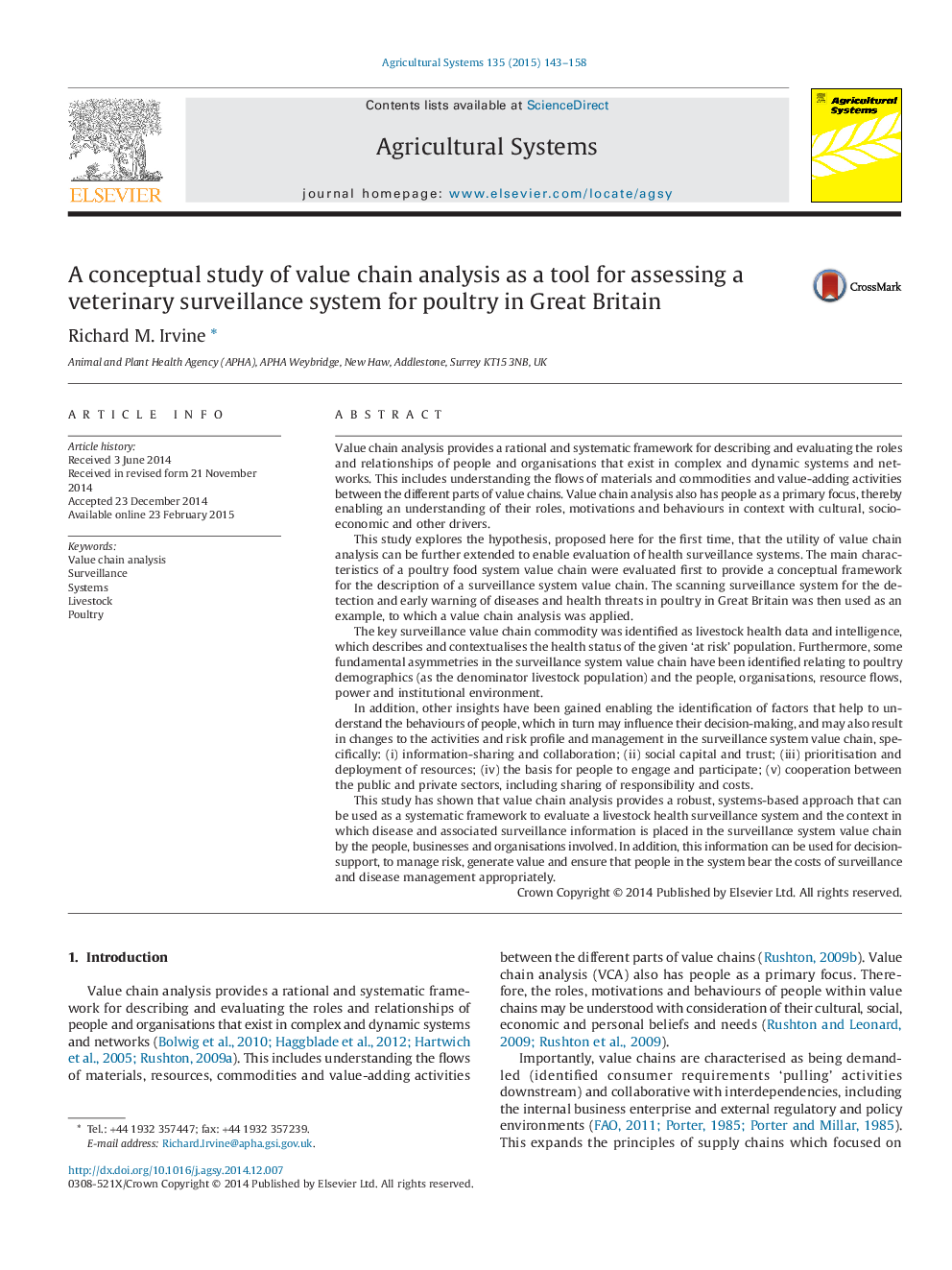| Article ID | Journal | Published Year | Pages | File Type |
|---|---|---|---|---|
| 6368538 | Agricultural Systems | 2015 | 16 Pages |
â¢Use of Value Chain Analysis to evaluate health surveillance systems is proposed.â¢Conceptual framework to compare different types of value chain developed.â¢Characterisation of veterinary surveillance system and its value chain attributes.â¢Method to assess surveillance value, costs, responsibility, risks and priorities.â¢Rational, systems-based framework for surveillance system evaluation shown.
Value chain analysis provides a rational and systematic framework for describing and evaluating the roles and relationships of people and organisations that exist in complex and dynamic systems and networks. This includes understanding the flows of materials and commodities and value-adding activities between the different parts of value chains. Value chain analysis also has people as a primary focus, thereby enabling an understanding of their roles, motivations and behaviours in context with cultural, socio-economic and other drivers.This study explores the hypothesis, proposed here for the first time, that the utility of value chain analysis can be further extended to enable evaluation of health surveillance systems. The main characteristics of a poultry food system value chain were evaluated first to provide a conceptual framework for the description of a surveillance system value chain. The scanning surveillance system for the detection and early warning of diseases and health threats in poultry in Great Britain was then used as an example, to which a value chain analysis was applied.The key surveillance value chain commodity was identified as livestock health data and intelligence, which describes and contextualises the health status of the given 'at risk' population. Furthermore, some fundamental asymmetries in the surveillance system value chain have been identified relating to poultry demographics (as the denominator livestock population) and the people, organisations, resource flows, power and institutional environment.In addition, other insights have been gained enabling the identification of factors that help to understand the behaviours of people, which in turn may influence their decision-making, and may also result in changes to the activities and risk profile and management in the surveillance system value chain, specifically: (i) information-sharing and collaboration; (ii) social capital and trust; (iii) prioritisation and deployment of resources; (iv) the basis for people to engage and participate; (v) cooperation between the public and private sectors, including sharing of responsibility and costs.This study has shown that value chain analysis provides a robust, systems-based approach that can be used as a systematic framework to evaluate a livestock health surveillance system and the context in which disease and associated surveillance information is placed in the surveillance system value chain by the people, businesses and organisations involved. In addition, this information can be used for decision-support, to manage risk, generate value and ensure that people in the system bear the costs of surveillance and disease management appropriately.
Graphical AbstractDownload full-size image
